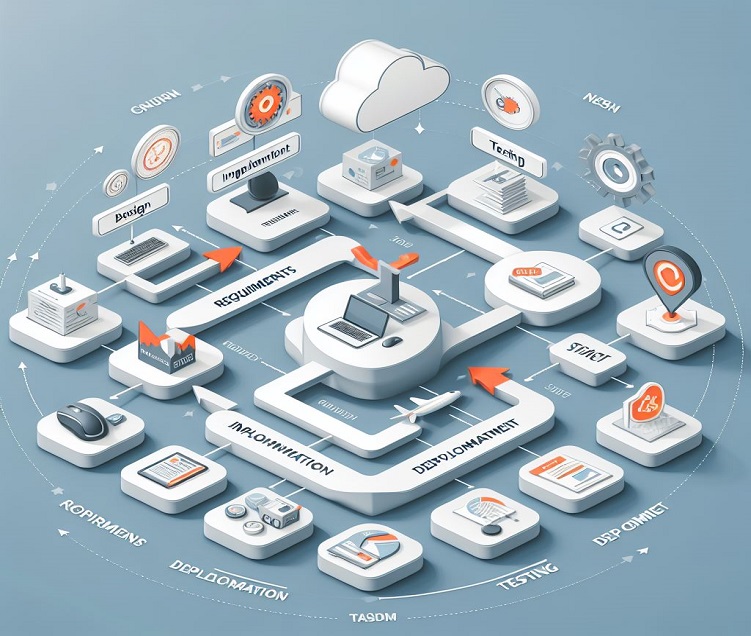In the world of technology, software development is a cornerstone process that drives innovation and progress. Behind every successful software product lies a meticulously planned and executed process known as the Software Development Life Cycle (SDLC). This comprehensive guide aims to unravel the intricacies of the SDLC, offering a detailed exploration of its phases, methodologies, and best practices.
Chapter 1: Fundamentals of Software Development Life Cycle
1.1 Definition and Importance
- Defining SDLC: What is it?
- importance of SDLC in software development
- Role of SDLC in ensuring quality and efficiency
1.2 Historical Evolution
- Evolution of SDLC methodologies over time
- Key milestones in the development of SDLC
- Influence of technological advancements on SDLC practices
Chapter 2: Phases of Software Development Life Cycle
2.1 Planning Phase
- Goal setting and project initiation
- Requirement gathering and analysis
- Feasibility assessment and resource planning
2.2 Analysis Phase
- detailed analysis of user requirements
- Identification of system functionalities
- Creation of system specifications document
2.3 Design Phase
- Architectural design and system structure planning
- User interface design
- Database design and implementation strategy
Read Also: Choosing the Right Antivirus Software: A Comprehensive Guide
2.4 Implementation Phase
- Writing code and programming
- Unit testing and debugging
- Integration of system components
2.5 Testing Phase
- Types of testing (unit testing, integration testing, system testing, acceptance testing)
- Test case development and execution
- Bug tracking and resolution
2.6 Deployment Phase
- System deployment strategies
- User training and documentation
- Transition to maintenance phase
2.7 Maintenance Phase
- Bug fixing and system updates
- Performance optimization
- Support and troubleshooting

Chapter 3: Methodologies of Software Development Life Cycle
3.1 Waterfall Model
- sequential approach to software development
- Advantages and disadvantages
- Use cases and suitability
3.2 Agile Methodology
- Iterative and incremental development
- Scrum, Kanban, and Extreme Programming (XP)
- Flexibility and adaptability in Agile
3.3 DevOps Approach
- Integration of development and operations
- Continuous integration and continuous deployment (CI/CD)
- Automation and collaboration in DevOps
3.4 Lean Development
- Elimination of waste and optimization of processes
- Principles of lean software development
- Application in modern software development
Chapter 4: Best Practices in Software Development Life Cycle
4.1 Collaboration and Communication
- importance of effective communication among team members
- Collaborative tools and platforms
- Agile ceremonies for communication
4.2 Documentation and Traceability
- importance of comprehensive documentation
- Traceability matrix and its significance
- Documentation tools and templates
4.3 Quality Assurance and Testing
- importance of QA in SDLC
- Test-driven development (TDD) approach
- Automated testing tools and frameworks
4.4 Risk Management
- Identification and mitigation of project risks
- Risk assessment techniques
- Contingency planning and risk response strategies
4.5 Continuous Improvement
- Embracing feedback and lessons learned
- Retrospectives and post-mortem analysis
- Implementing changes for continuous enhancement
Conclusion:
The Software Development Life Cycle is the backbone of software engineering, providing a structured approach to building robust and reliable software solutions. By understanding the phases, methodologies, and best practices of SDLC, software development teams can streamline their processes, improve collaboration, and deliver high-quality products that meet customer expectations. Embracing the principles of SDLC ensures efficiency, reliability, and success in the dynamic landscape of software development.






